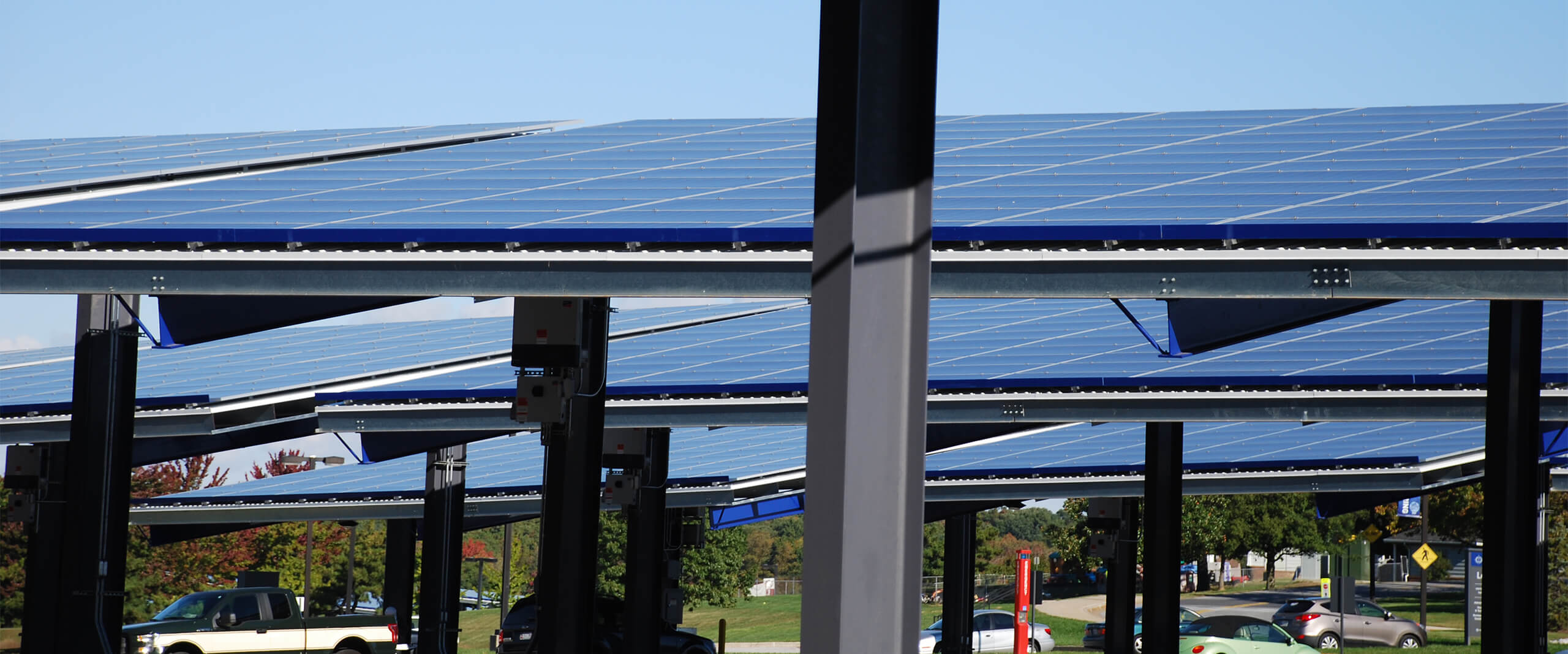Following Exelon’s acquisition of Constellation Energy, KCI Technologies Inc. was contracted to assist in a solar power initiative that was required by the terms of the merger.
The project’s goal was to generate 30 megawatts of solar energy, which is equivalent to the power demand of approximately 3,600 homes. The KCI team provided engineering and surveying services for installation of photovoltaic systems at 20 different sites with overlapping schedules and levels of complexity. Most of the arrays range from 189 to 2,319 kilowatts in power generating capacity.
A unique design approach was employed to accommodate each facility type and to maximize the efficiency of the photovoltaic panels. Ground and parking lot systems required that utilities be located, topographic surveys conducted, and electrical investigations completed to identify electrical connection points, confirm orientation of the arrays for peak output, and develop drawings to properly outline construction and connection to the utility grid. Geotechnical engineers analyzed subsurface conditions to determine how much heat the soil could absorb, which affects cable sizing, in addition to its corrosion potential in relation to selected foundation materials.
The layout of elevated parking structures also had to accommodate existing parking spaces and islands. Safety and security lighting that was blocked by the new installation were replaced with high efficiency LED fixtures to further support the site host by not only creating a portion of their overall power needs, but also lowering their overall energy use. At roof-mounted locations, Light Detection and Ranging (LiDAR) surveys precisely located elevated features that could affect panel layout or produce shading, a major consideration in maximizing the power generation potential of the solar array. Structural analyses determined the roof’s capacity to support the additional weight of the racking system and panel ballasts, since the panels were not attached to the roof, but instead weighted in place.
The complex scope, aggressive and ever-changing schedule, simultaneous work tasks in various submission phases, and last-minute changes in panel size presented unique challenges for the design team. The sheer number of sites resulted in simultaneous tasks, multiple permits, and multiple contracts. Of the numerous locations, five were moved forward into construction with the largest, a 5.1-megawatt project involving parking lot arrays at three community college campuses, expected to supply 27 percent of the institution’s energy demand. The $36.5 million project has proven that with innovative thinking, strong project management, and inclusive collaboration and communication, widespread and regional solar initiatives can be successfully implemented in urban areas.

